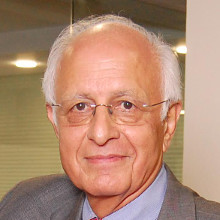Note: In his essay Listening to them—and shaping our future together, published a year ago, Arun Maira wrote: “…inequality has been increasing in the ‘Flat World’. Combined with inequality is a smouldering sense of unfairness, and an impression that those who have do not even care about those left behind…. There seem to be a million mutinies now….
“The people are speaking. Are we listening? It is high time we listen to people not like us and examine concepts that have become embedded in our minds about governance of societies and economies."
In the following extract from his latest book, Maira illustrates the value of creating a safe space where people can speak up and listen to each other. And shape solutions to complex problems together.
♦¤♦¤♦¤♦
There are always three sides to every story: your side, the other side, and the truth.
—Robert Evans
‘If you are not with us, you must be against us,’ President George W. Bush declared after 9/11, compelling people to declare whose side they were on. All the labour union leaders sat on one side of the big table at the meeting in Mumbai, and all the employers sat on the other side. This physical division made it easier to know which side they were on. We generally assume that everyone sitting on the same side of a legislative chamber or the same side of a table should have the same views. If someone we assumed was on our side supports what the other side is advocating, we are surprised. ‘We thought you were on our side!’ we say. Where we sit is expected to indicate where we stand in a debate. To make people’s loyalties clear, it is customary in many legislative chambers to make people sit on opposing sides. People who change their minds and betray our side must cross the floor and sit on the other side.
…
A meeting with a difference to discuss the future of India was held in Jaipur in February 2005. Its purpose was to provide an opportunity for leaders and emerging leaders from many walks of life in India to pause and reflect together on what they could do to enable desirable changes in the country. The meeting was unlike other meetings and seminars on the future of India. Three significant differences in its format facilitated deeper reflection on the future and present condition of the country amongst the hundred or so people who assembled together.
Firstly, the participants were very diverse. There was diversity of vocation—businessmen, politicians, bureaucrats, farmers, teachers, leaders of NGOs, students, journalists, homemakers, diplomats, and others. There was also diversity of age—from teenaged school students to retired cabinet secretaries in their seventies, and a healthy gender ratio—an equal number of men and women. The diversity of participants enabled many perspectives of the reality of India to be combined for all to understand the whole truth.
Second, the meeting was conducted in an open space in the gardens of the Rambagh Palace Hotel. The hotel created an informal, open amphitheatre for plenary sessions when all the participants were together. There were several groups of chairs spread out under the trees for smaller, parallel meetings. There were neither tables nor chairs in the amphitheatre. Layers of wooden platforms were set up in a horse-shoe format, with mattresses and cushions strewn on them. Participants could sit wherever they wanted.
Too many meetings are designed and conducted as meetings amongst positions and not meetings amongst people. People with higher positions must sit higher. People with the same positions on an issue must sit together. The settings of the meetings reinforce positions. They strengthen views of people as stereotypes. Moreover, they nestle people within their societal and ideological boxes from which they are expected to speak.
When Ms Vasundhara Raje, the Chief Minister of Rajasthan, came to the opening session of the meeting, she saw the diverse people—young and old, rich and poor (wealthy women in silk saris and farmers in white cotton dhotis), seniors and juniors—seated together on the mattresses. The organizers had placed a chair for her in the front. But she walked past it, climbed onto a platform, and settled down on a mattress amongst the people.
The third difference between the Jaipur meeting and conventional meetings was in the design of the meeting. It was designed as a dialogue amongst participants, rather than as a series of monologues that many meetings tend to be. There was no assigned time for speeches, nor any designated speakers, except for the brief introductions in the opening session about the purpose of the meeting and principles for its successful conduct.
Three principles were laid down for the meeting:
- The difficult and seemingly intractable problems in India, whether poor governance or endemic corruption, require collaboration amongst people from many walks of life. They cannot be solved by government, business, or civic society alone. Therefore, pointing fingers at others for failing to solve the problems does not help much. In fact, we have to identify and accept our own responsibilities, because ‘if we are not part of the problem, we cannot be part of the solution.’
- In the meeting, all people will be equals and will get equal opportunities to express themselves and be heard, whether they are a young student or a senior bureaucrat, because we can all learn from the benefit of insights from other perspectives.
- The primary orientation of every participant in the meeting must be to listen and to learn, and not try yet again to convince (with arguments that are stuck in our heads and that we repeat in multiple forums).
No doubt, the open setting made a big difference to the quality of the meeting. The principles for the conduct of the meeting, which the participants asked me, as their facilitator, to apply firmly, made an even bigger difference. Everyone got an equal opportunity to speak, whether a student, homemaker, farmer or a chief minister. Just as in a computer, in which the configuration of the hardware and the design of the software give the computer its capability to convert data to decisions, the design of the setting and the process enables a meeting to combine ideas of diverse people into agreements.
In the concluding plenary session in the amphitheatre, one of the participants, Ms Lata Vaidyanathan, the principal of a Delhi school, requested permission to read a poem she had composed to express her feelings about the meeting. She stepped into the open space before the participants and recited this:
I wandered and wondered
Like a lonely bird in the sky
With none but the clouds to encounter
When a gentle tapping breeze
Turned me around
I saw a flock of birds come
Who seemed to say
If we move together
The clouds will help us to sail
For there are rainbows in the yonder
For all of us to hail
We have sighted our target
And need to decide that
If we move together
Nothing is hard to get
Let each one be special
But knit our strengths around
For we want a country
That’s first on the count.
The design of the physical settings of meetings—the hardware—can have a tremendous impact on the quality of meetings. Conveners of meetings must pay more attention to the settings to achieve their desired outcomes. In addition to the hardware, the software of meetings—processes for dialogue and deliberation—enable deeper listening thereby improving outcomes of conversations and meetings.
(Excerpted from Listening for Well-being: Conversations with People Not Like Us by Arun Maira with permission from the publisher, Rupa Publications.)

